
Yeomanry is a designation used by a number of units and sub-units in the British Army Reserve which are descended from volunteer cavalry regiments that now serve in a variety of different roles.
Options for Change was a restructuring of the British Armed Forces in summer 1990 after the end of the Cold War.
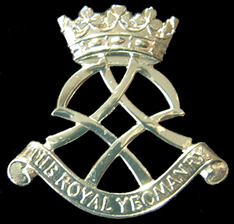
The Royal Yeomanry (RY) is the senior reserve light cavalry regiment of the British Army. Equipped with Supacat Jackal variants, their role is to conduct mounted and dismounted formation reconnaissance. The Regimental Headquarters is located in Leicester, with squadrons in Fulham, Nottingham, Dudley, Croydon, Telford, and Leicester. The regiment is part of the Royal Armoured Corps and is only reserve cavalry regiment to resubordinate into regular brigade as part of the Future Soldier Programme, which in turn arose from the Integrated Review of Security, Defence, Development and Foreign Policy published in March 2021.

The Sherwood Rangers Yeomanry (SRY) was a British Yeomanry regiment. In 1967 it was amalgamated with other units to form the Royal Yeomanry (RY), a light cavalry regiment of the Army Reserve. Originally raised as the Nottinghamshire Yeomanry Cavalry in 1794, the regiment was used on several occasions in the 19th Century to maintain law and order. During the Second Boer War and both World Wars the regiment earned 44 battle honours. It is now one of the six squadrons of the Royal Yeomanry (RY), a light cavalry regiment of the Army Reserve. Designated as 'A' Squadron, the Sherwood Rangers Yeomanry's current role is to support the Light Cavalry Regiments on operations by providing reconnaissance soldiers.
The East of England Regiment (EER) was the infantry unit of the Territorial Army of the East Midlands and East Anglia from 1 July 1999 to 1 April 2006. Upon the re-organisation of the infantry in 2006, the regiment became 3rd Battalion, Royal Anglian Regiment.
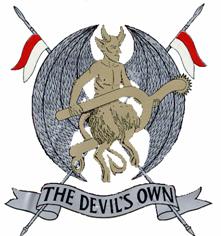
The Inns of Court & City Yeomanry is a British Army unit formed through the amalgamation of The Inns of Court Regiment and The City of London Yeomanry in 1961. Its lineage is maintained by 68 Signal Squadron and the Band of the Royal Yeomanry.
The 1957 White Paper on Defence was a British white paper issued in March 1957 setting forth the perceived future of the British military. It had profound effects on all aspects of the defence industry but probably the most affected was the British aircraft industry. Duncan Sandys, the recently appointed Minister of Defence, produced the paper. The decisions were influenced by two major factors: the finances of the country and the coming of the missile age.

The 49th Infantry Brigade, later known as 49th (Eastern) Infantry Brigade during the Cold War, was a brigade of the British Army.
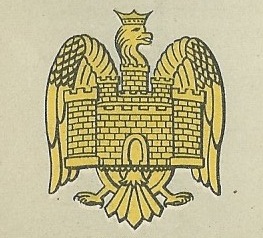
The Bedfordshire Yeomanry was a Yeomanry regiment of the British Army. Serving intermittently between 1797 and 1827, it was re-raised in 1901 for the Second Boer War. It participated in the First World War before being converted to an artillery regiment. It served in the Second World War. Its lineage was maintained by 201 Battery, 100th (Yeomanry) Regiment Royal Artillery until that unit was placed in suspended animation in 2014.
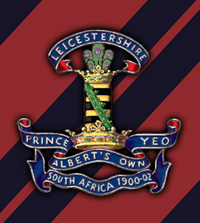
The Leicestershire Yeomanry (Prince Albert's Own) was a yeomanry regiment of the British Army, first raised in 1794 and again in 1803, which provided cavalry and mounted infantry in the Second Boer War and the First World War and provided two field artillery regiments of the Royal Artillery in the Second World War, before being amalgamated with the Derbyshire Yeomanry to form the Leicestershire and Derbyshire (Prince Albert's Own) Yeomanry in 1957. The regiment's lineage is currently perpetuated by E (Leicestershire and Derbyshire Yeomanry) Squadron of the Royal Yeomanry.

The Derbyshire Yeomanry was a yeomanry regiment of the British Army, first raised in 1794, which served as a cavalry regiment and dismounted infantry regiment in the First World War and provided two reconnaissance regiments in the Second World War, before being amalgamated with the Leicestershire Yeomanry to form the Leicestershire and Derbyshire Yeomanry in 1957.

There are 13 cavalry Regiments of the British Army each with its own unique cap badge, regimental traditions, and history. Of the currently nine regular cavalry regiments, two serve as armoured regiments, three as armoured cavalry regiments, three as light cavalry, and one as a mounted ceremonial regiment. There are also four yeomanry regiments of the Army Reserve, of these, three serve as light cavalry and one as an armoured regiment. Each yeomanry light cavalry unit has been paired with a regular unit of the same role, the armoured yeomanry unit is paired with the two regular armoured units. All except the Household Cavalry are part of the British Army's Royal Armoured Corps.

The Home Service Force (HSF) was a Home Guard type force established in the United Kingdom in 1982. Each HSF unit was placed with either a Regular Army or Territorial Army regiment or battalion for administrative purposes and given that formation's title, cap badge and recruited from volunteers aged 18–60 with previous British forces experience. It was introduced to guard key points and installations likely to be the target of enemy special forces and saboteurs, so releasing other units for mobile defence roles. It was stood down in 1992.

The Hertfordshire Yeomanry was a Yeomanry Cavalry regiment of the British Army that could trace its formation to the late 18th century. First seeing mounted service in the Second Boer War and World War I, it subsequently converted to artillery. Three regiments saw service in World War II, one of which was captured at the fall of Singapore. It continued through various postwar amalgamations and its lineage was maintained by 201 Battery, 100th (Yeomanry) Regiment Royal Artillery until that unit was placed in suspended animation in 2014.
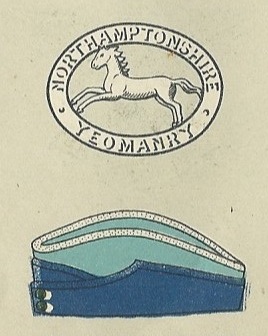
The Northamptonshire Yeomanry was a Yeomanry regiment of the British Army, formed in 1794 as volunteer cavalry. It served in the Second Boer War, the First World War and the Second World War before being reduced to squadron level in 1956. It ceased to have a separate existence in 1971.
The Leicester Town Rifles was an early unit of the British Volunteer Force raised in 1859. It went on to become the parent unit of the Territorial Army battalions of the Leicestershire Regiment, which served on the Western Front during World War I. Their successor unit served in the air defence role during and after World War II.
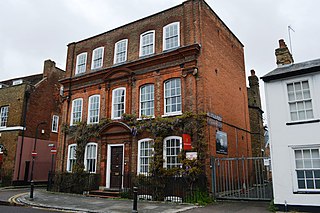
Yeomanry House is a military installation in Hertford. It is a Grade II* listed building.
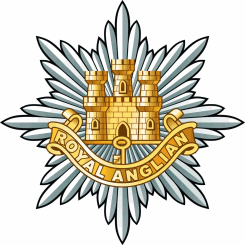
The 6th (Volunteer) Battalion, Royal Anglian Regiment was a part-time infantry unit of the British Army part of the Territorial Army (TA). Originally formed in 1971 from the expansion of many cadres, the battalion would eventually be disbanded in 1999 and formed sub-units in the new East of England Regiment. Today, the battalion's successors still form part of the Army Reserve (AR) component of the Royal Anglian Regiment's only remaining reserve unit, the 3rd (V) Bn.

















